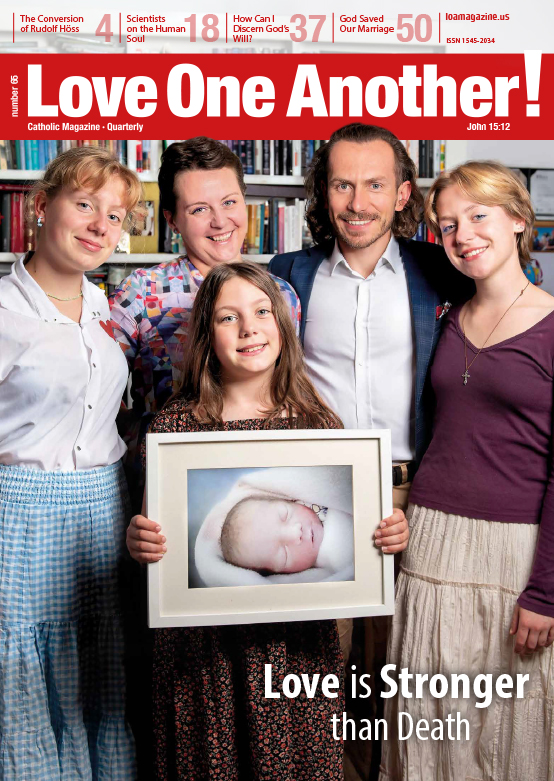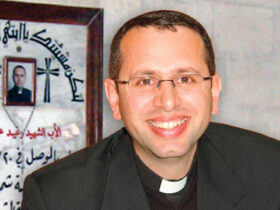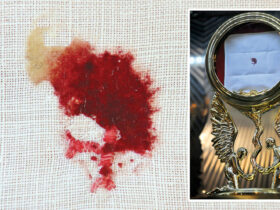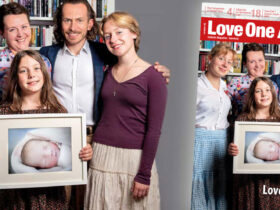NaProTechnology – the service of love

When I work with couples, I compare my work to a detective’s investigation. Sometimes one word spoken at the end of the visit is key, sometimes a deep analysis of the patient’s history is necessary.
Currently, there is a steady increase in the number of infertile couples and women who are unable to carry a baby until it can be born with no problems. The pain caused by lack of children is often compared to suffering from cancer. It takes away the joy of life, and reduces our self-esteem in a big way. Sometimes it requires psychological or pharmacological therapy. There are stages of rebellion, denial, aggression and anger, and finally, acceptance of the problem. But not all couples arrive at this last, most mature stage of the way they react to their difficulties.
There have always been people struggling with this problem. Historical sources, especially where monarchies existed, give us examples of such situations. If there was a long wait for an offspring, especially male, it had a very significant impact on the history of such nations. Wives were changed, because in the past, the blame for the lack of a suitable offspring was placed on women – faith denominations were changed, substitute mothers were used, herbs were applied, magic was sought as help. Also, prenatal mortality rates, both of children and of mothers, was significantly higher than it is now.
Despite the significant improvement in living conditions, hygiene and nutrition quality, the problem of reproductive disorders has, unfortunately, intensified. Some authors describe it as an epidemic. All of us know someone who can not have children or who has had problems with miscarriages. There are countries where the number of infertile couples is about 20% (every fifth couple!). It is hypothesized that humanity may perish only because we will stop reproducing (this is particularly true if we look at the impact of environmental toxins on male fertility, which is systematically worsening).
Couples suffering from the above challenges often require complex care and therapy on many levels. It is a great challenge for the medical world. It is necessary to discover the causes of infertility, to treat the couple and to care for them, to analyze their living and working conditions, family factors, diet, physical activity, and to treat disorders that often have not been diagnosed for a long time. All this requires a lot of effort from the team who takes care of the couple.
My personal road to work with couples with procreation disorders started very early on. When I began studying at the Medical University, I knew it was my mission. In the whole course of my career, every placement, internship and conference had been preparing me to learn as much as possible and then to help others.
One of the important moments in my life was training in NaProTechnology – first in Galway in Ireland and then in Omaha in the USA. NaProTechnology is a diagnostic and therapeutic system developed by Prof. Hillgers, which can be used by couples who want to postpone conception, couples with infertility, and also it can be used to assess reproductive health.
It consists in the assessment of the female cycle according to the “Creighton Model FertilityCare™ System” – the observation of cervical mucus and, optionally, the basal body temperature measurement – supported by a thorough medical examination, both subjective (medical interview) and objective. Additional laboratory and imaging tests are used. If necessary, surgical methods are also used to correct what is anatomically or functionally impaired.
When I work with couples, I compare my work to a detective’s investigation. I treat infertility as a symptom, which means the cause needs to be found. Sometimes it takes just one hour, sometimes it means weeks of searching through medical literature on the Internet, numerous conversations with specialists and also the attending of conferences. I believe there is no idiopathic (unexplained) infertility, it’s just that we have not discovered the cause yet, we haven’t found the clue. Sometimes, one word spoken at the end of a visit is the key, sometimes a long-term analysis of the patient’s history is necessary. My job is to recognize the illness and improve health, and prepare the spouses to be ready to receive their baby and help them become good parents.
One of my first couples who happily got to have a baby, from the very beginning had been open to life and had never used contraception. After three years, they started trying for a baby. Visiting the gynaecologist did not show any pathology in the wife. Then the examination of the husband revealed a reduced sperm count, lack of movement and many damaged forms. In addition, a large number of bacteria and leukocytes were observed in the man’s body. Referred to the urologist, he received several antibiotics. Months passed… The doctor referred the couple to intrauterine insemination (IUI) procedure. They went through five of these treatments. In a separate room, the husband would produce semen by masturbation, then it was injected into the wife’s uterus. (Let us remember that the Church teaches that masturbation is normally immoral – Ed) Each procedure cost a fortune. Unfortunately, not once did the pregnancy test show two lines – there was no pregnancy.
When these patients came to me, they were very depressed. They did not believe that anyone could help them. Having analyzed the results, I decided to look for the cause of the infection – this was the most important thing. I concentrated on both the husband and the wife at the same time. The semen culture test showed anaerobic bacteria. It is a sign that the onset of the infection, its primary source, is hidden somewhere. Having examined the patient, from top to bottom, I found what I was looking for – the teeth. Eight very decayed teeth. He was referred to the dentist urgently and each dental surgery was performed with antibiotic protection. At the same time, the wife also underwent antibiotic treatment – the spouses are always treated as one organism when administering a treatment. They are required to take parallel medicines. During treatment the husband was feverish and very swollen; the treatment had to be spread over time.
Three months passed. When all the husband’s problems were sorted out, the wife received the medication which – if she got pregnant, would help maintain the pregnancy safely. The baby was conceived. For nine months we were monitoring all the parameters to keep the baby safe. At week 39 little Adam arrived, born naturally. He weighed 3200 grams. A year and a half later, without any treatment, Adam’s sister was conceived and we are now awaiting her birth.
The example of this family shows how important accurate diagnosis and causal treatment are.
Do you like the content published on our website?
Support us!





